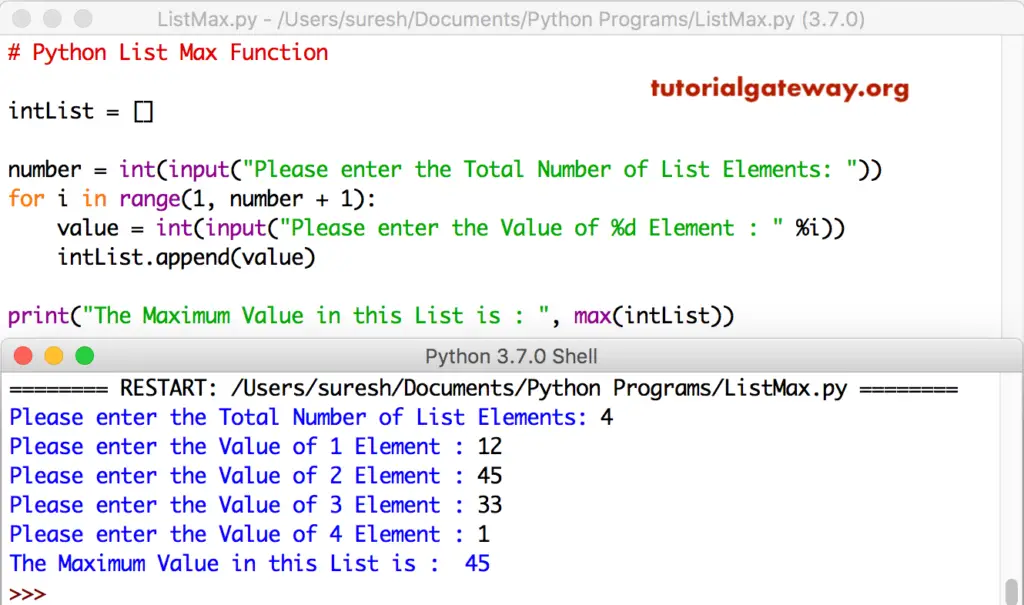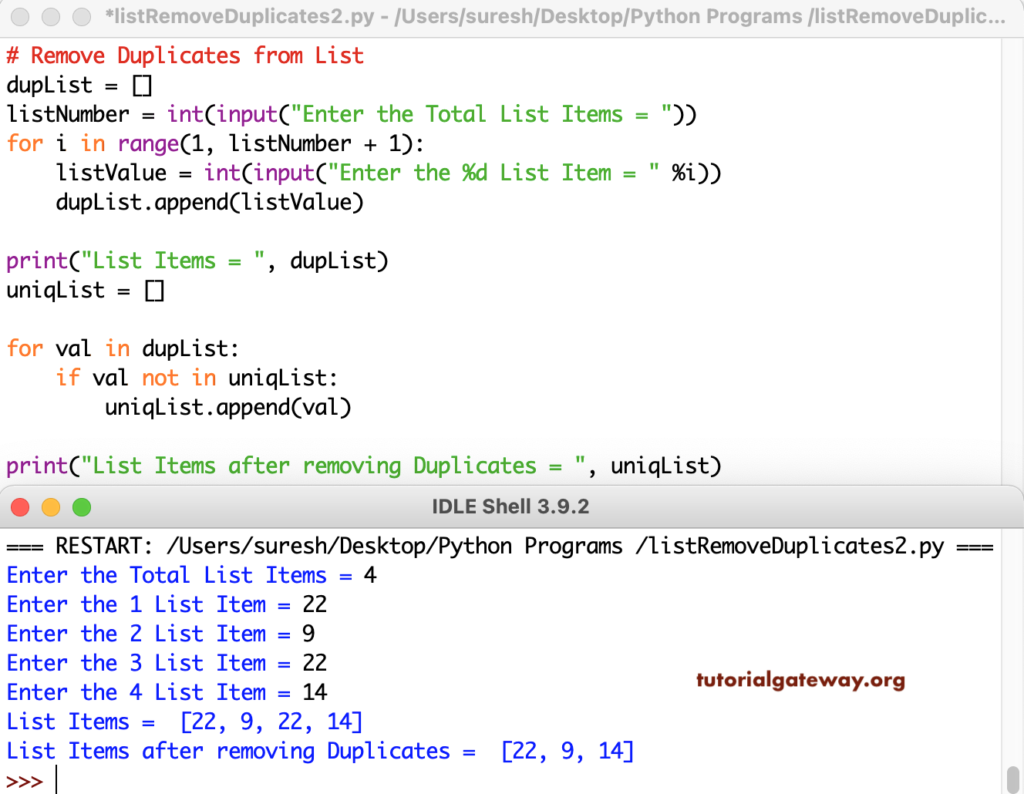Get Value From List Python
Get Value From List Python - The best way is probably to use the list method index For the objects in the list you can do something like def eq self other return self Value other Value with any special processing you need You can also use a for in statement with enumerate arr Example of finding the index of an item that has value 100 W3Schools offers free online tutorials references and exercises in all the major languages of the web Covering popular subjects like HTML CSS JavaScript Python SQL Java and many many more Method 3 Use Simple List Comprehension This option uses List Comprehension to loop through and extract each List element stock price Above declares a List containing the previous week s stock prices Sunday Saturday and saves to prices Next List Comprehension is used to loop and extract all price values
Look no further than printable templates if you are looking for a effective and simple way to improve your performance. These time-saving tools are free and easy to use, offering a series of benefits that can help you get more carried out in less time.
Get Value From List Python

Python Get Random Item From List Python Program To Get N Random Items
 Python Get Random Item From List Python Program To Get N Random Items
Python Get Random Item From List Python Program To Get N Random Items
Get Value From List Python To start with, printable templates can help you remain organized. By offering a clear structure for your tasks, order of business, and schedules, printable design templates make it easier to keep whatever in order. You'll never ever need to fret about missing out on deadlines or forgetting crucial tasks again. Utilizing printable templates can assist you save time. By getting rid of the requirement to create brand-new files from scratch every time you require to complete a job or prepare an occasion, you can focus on the work itself, instead of the documents. Plus, numerous design templates are adjustable, allowing you to customize them to match your needs. In addition to conserving time and staying organized, utilizing printable design templates can also assist you stay inspired. Seeing your development on paper can be an effective incentive, motivating you to keep working towards your goals even when things get difficult. Overall, printable design templates are a great method to boost your performance without breaking the bank. So why not provide a shot today and begin attaining more in less time?
Using Python Lists Part 2 YouTube
 Using python lists part 2 youtube
Using python lists part 2 youtube
Accessing index and value in list Using heapq Approach Import the heapq module Initialize the list test list with some values Print out the original list test list Create an empty list heap to store the index and value pairs in a heap Iterate over the list test list using enumerate
Now let s explore the various methods to get a value from a list in Python Method 1 Using Indexing The Most Common Method Indexing is the most common and straightforward way to get a value from a list Python uses zero based indexing meaning the first element of the list has an index of 0 the second element has an index of 1 and so on
Python Set Remove Methods Remove Discard Pop Clear Ipcisco Riset
 Python set remove methods remove discard pop clear ipcisco riset
Python set remove methods remove discard pop clear ipcisco riset
Lists In Python Operations On Python Lists FACE Prep
 Lists in python operations on python lists face prep
Lists in python operations on python lists face prep
Free printable templates can be an effective tool for boosting efficiency and attaining your goals. By selecting the right design templates, integrating them into your regimen, and customizing them as required, you can simplify your day-to-day jobs and take advantage of your time. Why not give it a shot and see how it works for you?
460 list 10 will give you the first 10 elements of this list using slicing However note it s best not to use list as a variable identifier as it s already used by Python list To find out more about this type of operation you might find this tutorial on lists helpful and this link Understanding slicing
If I have a list of lists and just want to manipulate an individual item in that list how would I go about doing that For example List1 10 13 17 3 5 1 13 11 12 What if I want to take a value say 50 and look just at the first sublist in List1 and subtract 10 the first value then add 13 then subtract 17